[et_pb_section bb_built=”1″][et_pb_row][et_pb_column type=”4_4″][et_pb_text _builder_version=”3.0.106″ background_layout=”light”]
 Vision therapy is often misunderstood. It has been misrepresented as some people have taken ideas about how vision works, coupled with real medical concepts, and tried to make their own vision “cures” while calling them “vision therapy.” Vision therapy is no one cure, and not even one treatment, but instead is a non-surgical, customized program created by a doctor and under his or her supervision. The process of vision therapy aims to correct certain vision problems or vision-related skills.
Vision therapy is often misunderstood. It has been misrepresented as some people have taken ideas about how vision works, coupled with real medical concepts, and tried to make their own vision “cures” while calling them “vision therapy.” Vision therapy is no one cure, and not even one treatment, but instead is a non-surgical, customized program created by a doctor and under his or her supervision. The process of vision therapy aims to correct certain vision problems or vision-related skills.
Because more people are asking for treatment options and bringing their children for eye exams earlier in life, vision therapy has become more well-known. We get a lot of questions about how it can help patients, so here are some answers to commonly asked questions about vision therapy.
I just heard about vision therapy helping a family I know. Is it new?
No, vision therapy is not new. Many of the activities and tools doctors use have been around for decades or more, but more people are asking about it and opting for vision therapy over surgical procedures when possible.
What conditions can vision therapy treat?
This is dependent on the patient’s unique situation, but vision therapy may be used to treat or improve problems like amblyopia (“lazy eye”), strabismus (“crossed eyes”), binocular vision problems with eye alignment, eye movement disorders, focusing disorders, or other visual deficiencies related to eye strain, eye fatigue, or problems derived from stroke or brain injury.
What does vision therapy do?
Vision therapy attempts to help focusing deficiencies and eye muscle imbalances, among other deficiencies. Vision problems can interfere with academic performance or impair the ability to comfortably read, so these coordinated plans try to improve these functions.
Is vision therapy only for children?
There are several kinds of vision therapy that include various treatments and exercises that may help you or your child. Vision therapy is more common for children because it is more likely that a child’s vision impairment can be aided when they are young, and more important to make sure development is not impeded.
Does it work?
This depends on many factors including the patient’s anatomy, the eye condition or deficiency, and how early the problem is treated. The only person who can assess the likelihood of vision therapy success is an experience eye doctor.
If you have questions about this or other eye health conditions, contact us for more information!
[/et_pb_text][/et_pb_column][/et_pb_row][/et_pb_section]




